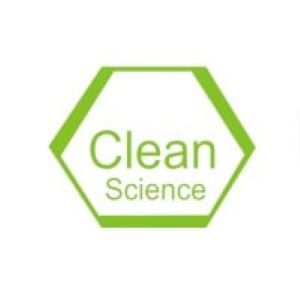Destocking in polymer industry is likely to impact volumes in H1FY24, and prices may drop as the company passes lower raw material prices

Clean Science and Technology’s (Clean Science) Q4FY23 EBITDA margin expansion of 290bps QoQ to 48.5% was a positive surprise, driven by lower raw material prices and better product mix. Company sees the challenge of raw material price volatility continuing in H1FY24. Production of ‘hindered amine light stabilisers’ (HALS) has been smooth and the initial response to it encouraging. Clean Science has added 2ktpa capacity in unit-3 of its plant and plans to add another 15ktpa in unit-4, which will help significantly cover the HALS portfolio. Company expects to utilise the entire HALS capacity in next 3-4 years. It is also adding new products in performance chemicals and pharmaceutical intermediates with Rs2bn capex, which will get commissioned in H1FY25. The two expansions should imply strong growth FY25 onward. Though margins are likely to shrink due to initial set-up of two projects, the company expects margin improvement over the next few years.
Performance chemicals segment revenue grew 12.8% YoY. In Q4FY23, Clean Science’s total revenue grew 6.0% YoY (down 8.6% QoQ) to Rs2.2bn. This was driven by the performance chemicals segment revenue growth of 12.8% YoY at Rs1.6bn while it dipped 7.7% QoQ which is impacted from destocking on two counts – 1) easing supply chain issues thereby improving availability / predictability and 2) falling raw-material prices driving down prices. Pharmaceutical intermediates revenue grew 15.4% YoY (up 4.1% QoQ) to Rs412mn and was impacted by slower sales in new product, para benzoquinone (PBQ), a raw material for agrochemicals. FMCG chemicals revenue fell 2.6% YoY and 8.5% QoQ as the company is utilising more anisole as feedstock, thus lowering third-party sales. Clean Science expects the next two quarters to be marginally affected by destocking, but expects recovery of volumes subsequently. Prices are likely to drop as the company passes on the benefit of lower raw material prices to customers.
EBITDA margin rose 290bps QoQ to 48.5%. Clean Science’s gross profit margin jumped 320bps QoQ to 70.5% and gross profit rose 14.5% YoY to Rs1.5bn. Margins benefited from lower raw material prices but, considering the volatility, the company has withheld guidance for the same. Other expenses fell 11.8% QoQ / 13.8% YoY due to decline in coal prices (power cost) and freight cost. EBITDA was up 25.5% YoY to Rs1.1bn and net profit grew 29.1% YoY to Rs805mn.
Plans to expand HALS capacity to 17ktpa. Company witnessed encouraging response to its HALS-770 series from domestic master-batch producers. It has also been approved by a European customer. Clean Science sees FY24 HALS volumes to be lower, but expects to sell 100tpm in FY25. It has added 2ktpa for the HALS-770/701 series and intends to add 15ktpa in unit-4 of its plant with Rs3bn capex, which should expand the HALS range.
Other conference call highlights. 1) Destocking in polymer industry is likely to impact volumes in H1FY24, and prices may drop as the company passes lower raw material prices. 2) PBQ is facing challenge as underlying agrochemical volumes have dropped. Company expects pick-up in PBQ from Q3FY24. 3) Clean Science expects to reach peak utilisation in HALS (17ktpa capacity) over next 3-4 years. It will have both domestic and export sales. India imports 250tpm HALS and Clean Science expects to capture at least 1/3rd of it immediately. This means 100tpm sales in FY25. Unit-4 will add 15ktpa capacity, which will help Clean Science expand its offerings in HALS including premium products that would boost both new premium customer additions and margins. The average realisation for HALS will be US$8-10/kg. 4) Clean Science also plans to add new products with a total capex outlay of Rs2bn, which includes certain performance chemicals with application in waste water treatment, and intermediates in anti-retroviral application. It already produces DCC for anti-retrovirals and the product will be sold to same customers, hence ramp-up is expected to be fast. The plant is expected to commissioned by end-H1FY25. Asset turnover is estimated to be 2.5-3x. 5) Company aspires to achieve EBITDA margin of 50% over the next few years in new products and HALS series. 6) New product contribution has increased to 9% in FY23 from 4% in FY22. 7) Capex in FY24 is expected at Rs1.8bn in subsidiary for developing unit-4 plant, which will house 15ktpa HALS capacity. Rs2bn capex will go to commence its plant for new products over FY24 and H1FY25. Total capex required to put up the entire HALS capacity is estimated at Rs3bn.
Risks – Upside: 1) Higher-than-expected sales from HALS; 2) further recovery in margins. Downside: 1) Slower-than-expected acceptance of HALS in international markets; 2) higher-than-expected discounting in HALS, which can hurt margins.
Subscribe to our newsletter & stay updated.